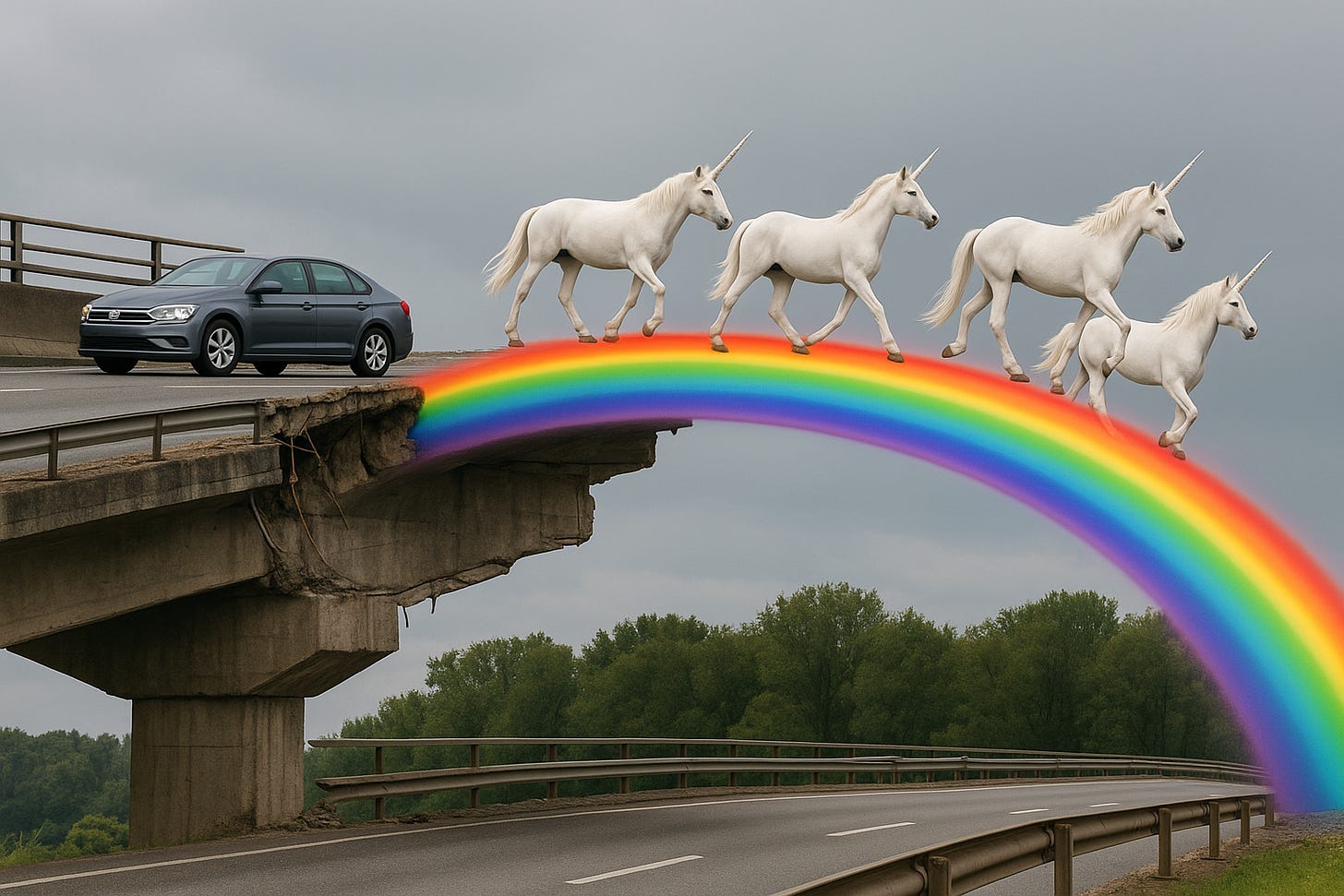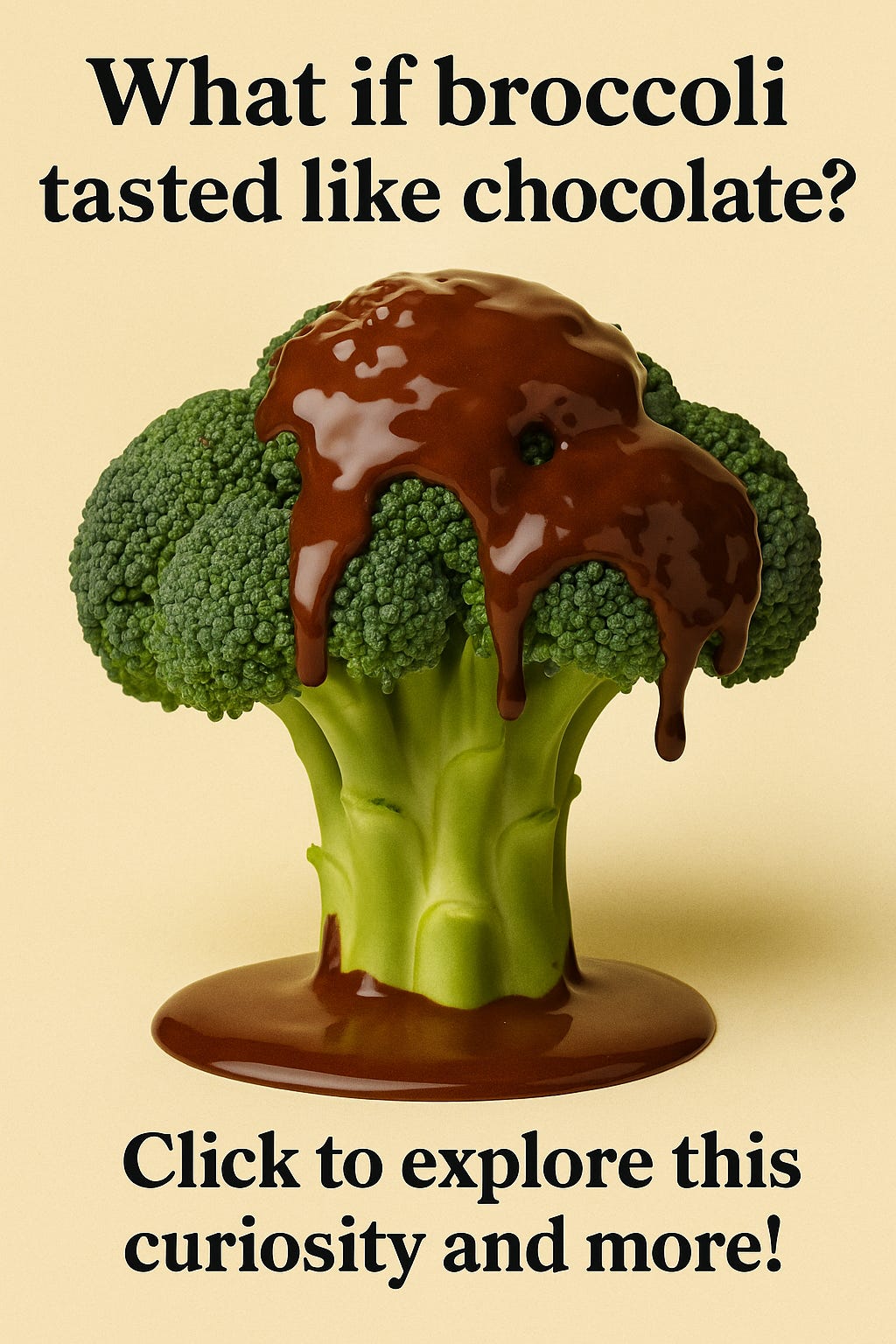Bridge the Gap Differently
Curiosity-Based Thinking and the Search for Smarter Infrastructure Solutions
The Familiar Problem That Refuses to Fix Itself
A bridge collapses. Power grids go down. A city’s water system fails overnight. These aren’t scenes from a sci-fi thriller; they’re symptoms of a silent crisis happening all over the world. The backbone of our lives, is aging, underfunded, and dangerously brittle.
And yet… the problem persists.
We know the stakes. We understand the backlog. We even agree on the gap: global infrastructure investment needs to hit $97 trillion by 2040, but we’re $18 trillion short. Still, despite the urgency, solutions remain slow, partial, or out of reach. Why?
Because infrastructure is one of the most novel problems engineers face. Not new in concept, but novel in the sense that each crumbling bridge, buckling road, and leaking pipeline presents a complex, interconnected challenge with no clear or universal fix. And that’s where Curiosity-Based Thinking steps in.

What if You Could Taste and Smell with Your Fingers?
Yes, really. Let’s linger on that.
What if you could taste or smell with your fingers? High school students once explored this “what if” in The Book of What If…?, and their responses were imaginative, awkward, hilarious—and surprisingly profound. Touching food would deliver flavor instantly. Handshakes might feel like kisses. Gloves would become essential. Personal hygiene? Completely rethought.
On the surface, this thought experiment is absurd. But just beneath it lies a powerful mechanism for engineering thinking: sensory transfer.
What if we reimagined how infrastructure could sense, respond, and even heal itself?
To explore that, let’s run this “what if” through the Curiosity-Based Thinking, What? to Wow! process and see how it nudges our brains out of the predictable:
What: What if fingers could taste and smell?
Who: Who benefits or struggles most with sensory shifts—humans or machines?
Where: Where might sensory information matter most in aging infrastructure?
When: When would early detection of stress or strain change the outcome?
Why: Why is it valuable to embed more “senses” into our roads, bridges, and grids?
How: How might infrastructure be designed to “feel” or “smell” changes in stress, pressure, or material fatigue?
Huh?: What would it mean if concrete could tell us when it’s stressed—before it cracks?
Wow!: What if our infrastructure could sense damage and respond—just like skin does when it’s cut?
This isn’t about turning engineers into philosophers. It’s about inviting them to ask slightly ridiculous questions to make smarter discoveries. And that's the core of Curiosity-Based Thinking.

Curiosity-Based Thinking in Action – Engineer Edition
Let’s bring this to your next design sprint, strategy session, or infrastructure challenge.
Here’s a modified CBT activity you can run with your team—call it The Sensorial Shift Workshop:
Step 1: Start with the “What if?”
Write the question “What if infrastructure could taste and smell with its surface?” on the board. Let it simmer. Let the discomfort and laughter pass.
Step 2: Brain Dump
Each team member has 5 minutes to jot down whatever comes to mind: keywords, sketches, sci-fi ideas, or sensory metaphors.
Step 3: What? to Wow! as a Team
Use the 8-question framework above. Have each group write one response per question. No wrong answers—only surprising ones.
Step 4: Sensory Mapping
On a large printout of a bridge, road, or pipeline, invite teams to draw or place where they imagine sensors or self-healing mechanisms might live. Where would “nerves” go? Where are the “tongue receptors” or “olfactory cells”?
Step 5: Sketch a Solution
Design an elegant, futuristic feature that incorporates one or more “senses” into an infrastructure element. How does it alert us? How does it act? Who benefits?
Step 6: Share and Speculate
Each group presents their solution—no pressure to be realistic yet. This is where imagination stretches possibility.
The Science Behind the Curiosity
Curiosity, it turns out, is a neurological superpower.
Research from Dr. Andrew Huberman shows that engaging curiosity releases dopamine, serotonin, and norepinephrine simultaneously—creating a unique state of learning readiness. Other studies reveal that:
Curious people show less defensiveness and more collaboration
CQ (Curiosity Quotient) rivals IQ and EQ when it comes to solving complex problems
Curiosity-driven teams outperform others when facing ambiguous or long-term challenges
This matters for engineers. Because building infrastructure isn’t just about calculations. It’s about discovering elegant answers where none exist—yet.

Inside the Minds of Eight Curious Engineers
Let’s imagine eight seasoned engineers, each an expert in their domain, walking through the Sensorial Shift Workshop introduced above:
A bridge architect sketches a “vascular” concrete bridge with embedded microcapsules of healing resin that burst on microfracture.
A civil planner proposes a regulatory framework for sensor-enabled public roads that “whisper” their maintenance needs in real time.
A materials engineer suggests a polymer skin for pipes that changes color when corrosion begins.
An AI systems designer offers an adaptive infrastructure network using neural feedback loops to optimize traffic flow and power usage.
A sustainability consultant proposes biodegradable nanobots that “sniff out” weaknesses in underground cables.
A transportation engineer invents a tactile-responsive asphalt blend that softens under extreme stress and rehardens when conditions stabilize.
A data analyst develops a city-wide “sensory dashboard” for infrastructure, modeled after biological nervous systems.
A veteran utilities engineer proposes embedding scent-markers in aging water lines that trigger olfactory detectors before leaks surface.
Together, they present a prototype for BioSensory Infrastructure—a citywide system of smart surfaces that monitor their own health, speak up when stressed, and repair themselves when wounded.
It’s wild. It’s weird. And it just might work.
Infrastructure problems are some of the oldest and most persistent on Earth. But what if the answers don’t come from looking harder at the problem... but by looking differently?
So next time your team’s stuck, unstick your curiosity. Ask the absurd. Taste the road. Smell the bridge. Touch the future—literally.
All by starting with a little, “what if…?”!
Stay curious!
Matt
Here are some articles on the Substack that have caught my curiosity!
What if you went back to school? What would you study? How about AI Wrangling?!
Love this article? Post? Stack? Writing… by
If you’re familiar with the science behind Curiosity-Based Thinking, you’re familiar with curiosity’s capabilities of rewiring your brain. So, it’s always fun to see folks like
and hopping on the curiosity bus and sharing the power and potential of curiosity!Stoked to see what else they share about curiosity!







Thanks for the shout out!